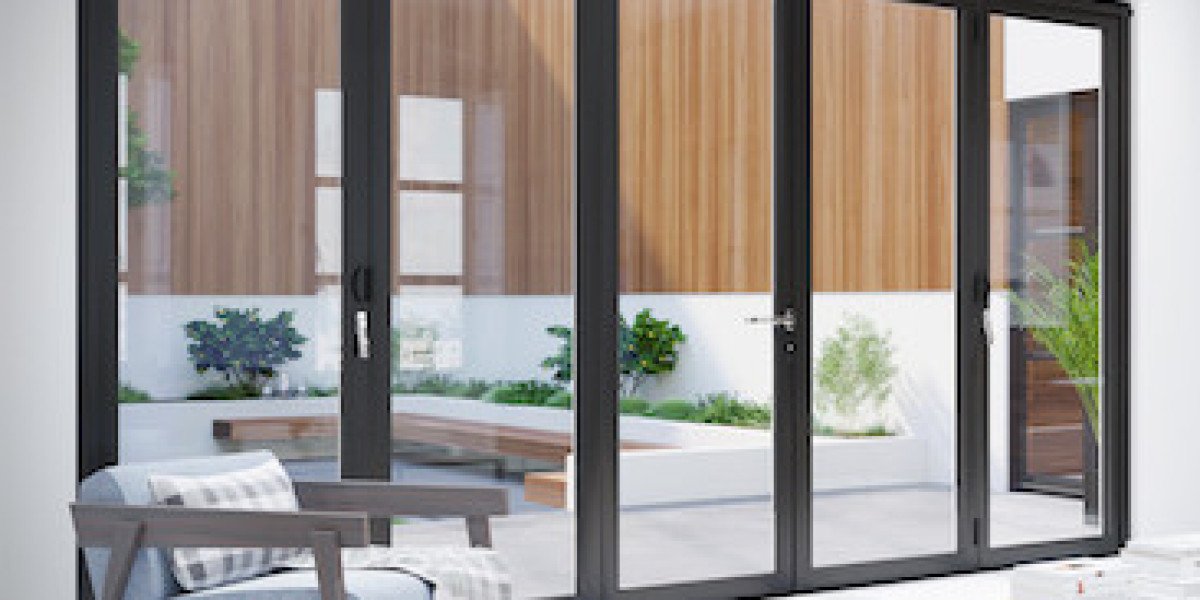Bifold Door Repair: A Comprehensive Guide to Fixing Common Issues
bifold door won't stay closed doors, likewise understood as folding doors, are a popular choice for property owners aiming to take full advantage of space and develop smooth shifts in between rooms or indoor and outdoor living locations. Their stylish, space-saving design enables for large openings without the swing area required by standard hinged doors. From closets and pantries to patio areas and space dividers, bifold doors provide versatility and visual appeal. However, like any mechanical part in a home, bifold doors can experience wear and tear with time, leading to different functional problems. Fortunately, many typical bifold door problems are manageable with some basic DIY skills and the right guidance.
This short article acts as a detailed guide to understanding and addressing typical bifold door repairs. We will explore common issues, equip you with the required tools and understanding, and walk you through detailed repair procedures. By comprehending the mechanics of bifold doors and discovering basic repair methods, property owners can extend the lifespan of their doors and avoid costly expert service calls.

Comprehending Common Bifold Door Problems
Before diving into repairs, it's vital to recognize the source of the issue. Bifold doors, while relatively basic in design, rely on numerous parts working in harmony. When one part malfunctions, it can affect the whole system. Here are a few of the most frequent issues house owners come across with bifold doors:
- Hanging or Sticking Doors: This is perhaps the most typical complaint. Doors may get stuck while opening or closing, need extreme force to move, or scrape versus the frame or flooring. This can be caused by misaligned hinges, warped doors, or concerns with the track and roller system.
- Misaligned Doors: Even when closed, bifold doors must sit flush and aligned. Misalignment can manifest as gaps between door panels, uneven spacing from the frame, or an inability to latch appropriately. This can arise from loose hinges, warped doors, or shifted tracks.
- Harmed or broken bifold door Hardware: The rollers, hinges, pivots, and tracks are the workhorses of a residential bifold door repairs door system. With time and with regular usage, these components can wear out, break, or become harmed. Damaged rollers can prevent smooth sliding, while harmed hinges can trigger sticking and misalignment. Harmed tracks can block roller movement and lead to jerky operation.
- Loose Screws and Fittings: Vibrations from regular usage can loosen screws and fittings that hold the hinges, tracks, and other hardware in place. Loose components can lead to instability, misalignment, and noisy operation.
- Deformed Doors: Exposure to moisture and temperature variations can trigger wood bifold doors to warp. Distorted doors can be hard to close correctly, may rub against the frame, and can develop gaps.
Vital Tools and Materials for Bifold Door Repair
Having the right tools and materials on hand will make the repair process substantially smoother and more efficient. Here's a list of typical items you might require:
- Screwdrivers: A set of Phillips head and flathead screwdrivers of numerous sizes is necessary for tightening up and loosening screws.
- Drill/Driver: For more persistent screws or for installing new hardware, a drill/driver can be invaluable. Guarantee you have a range of drill bits and screwdriver bits.
- Hammer: A hammer can be handy for gently tapping parts into place or for getting rid of persistent pins.
- Pliers: Pliers are helpful for gripping small parts, flexing metal components, and eliminating pins.
- Level: A level is important for ensuring doors are properly aligned vertically and horizontally.
- Tape Measure: For precise measurements when changing parts or adjusting door positions.
- Wood Shims: Shims are slices of wood used for leveling and aligning doors within the frame.
- Lube (Silicone Spray or Dry Lube): Lubricant can significantly enhance the smooth operation of rollers and hinges.
- Replacement Rollers, Hinges, and Tracks: Depending on the concern, you may need to acquire replacement parts. It's typically practical to determine the producer and model of your bifold doors to ensure you get compatible replacements.
- Wood Filler or Epoxy (for wooden doors): For repairing minor damage to wooden doors, such as broken corners or screw holes.
- Shatterproof Glass and Gloves: Always focus on safety when carrying out DIY jobs.
Step-by-Step Bifold Door Repair Guide
Now, let's look into the useful actions for fixing common bifold door problems:
1. Resolving Hanging or Sticking Doors:
- Inspection: Begin by carefully observing where the door is sticking or hanging. Is it rubbing versus the top, bottom, or side of the frame?
- Lubrication: Often, a basic lubrication of the rollers and track can fix sticking concerns. Apply silicone spray or dry lube to all moving parts, consisting of rollers, hinges, and the leading and bottom tracks. Open and close the door several times to distribute the lube.
- Hinge Adjustment: If lubrication does not fix the problem, examine the hinges. Loose hinges can cause doors to sag. Tighten up any loose hinge screws. If the screws are stripped, you may require to use longer screws or wood filler in the screw holes before re-screwing.
- Track Adjustment: In some cases, the track itself might be somewhat misaligned. Check if the track is firmly attached to the frame. If it's loose, tighten the screws. Small track misalignment can often be corrected by gently tapping the track into place with a hammer and block of wood.
- Door Warping: If the door is deformed, small warping may be dealt with by thoroughly aligning it using clamps and weights. However, severely warped doors may require to be replaced.
2. Repairing Misaligned Doors:
- Hinge Adjustment (Lateral Alignment): Misalignment can typically be corrected by changing the hinges. Loosen up the hinge screws somewhat and gently shift the door panel left or right to accomplish better positioning. Retighten the screws as soon as aligned.
- Shims (Vertical Alignment): If the door is uneven vertically, you can utilize shims. Open the door and location shims behind the hinges on the lower panel to raise it or behind the depend upon the upper panel to decrease it. Explore shim placement and thickness until the doors are aligned, then tighten the hinge screws safely.
- Leveling the Frame: In uncommon cases, the door frame itself might be out of level. Use a level to inspect the frame. If it's not level, you might require to adjust the frame itself, which can be a more complicated job and might require expert help.
3. Changing Damaged Hardware (Rollers, Hinges, Tracks):
- Roller Replacement:
- Open the bifold door and locate the harmed roller.
- Depending on the style, you may need to remove a keeping clip or screw to launch the old roller.
- Carefully remove the old roller.
- Insert the brand-new roller, ensuring it is properly seated and secured.
- Evaluate the door operation.
- Hinge Replacement:
- Open the door and identify the damaged hinge.
- Get rid of the screws holding the hinge to both door panels and the frame.
- Get rid of the old hinge.
- Position the new hinge in the exact same area.
- Secure the brand-new hinge with screws.
- Evaluate the door operation.
- Track Replacement: Replacing a track is a more involved procedure and is typically just required if the track is badly harmed or bent.
- Remove the bifold doors from the track.
- Unscrew the old track from the frame.
- Procedure and cut the brand-new track to the right length, if essential.
- Position the new track and secure it to the frame with screws.
- Re-install the bifold door upgrade doors.
- Evaluate the door operation.
4. Tightening Loose Screws and Fittings:
- Regular Inspection: Periodically inspect all screws and fittings on your bifold doors.
- Tightening: Use a screwdriver to tighten up any loose screws.
- Stripped Screw Holes: If screws are consistently loosening up or stripped, you can use wood filler (for wood doors) or epoxy to repair the screw holes. Fill the hole, let it dry, pre-drill a pilot hole, and then re-install the screw. Alternatively, usage slightly longer or larger screws to get a better grip.
Routine Maintenance for Bifold Doors
Preventative upkeep is essential to extending the life of your bifold doors and reducing the need for repairs. Here are some necessary maintenance suggestions:
- Regular Cleaning: Keep the tracks and rollers clean from dust, particles, and family pet hair. Vacuum or wipe down tracks regularly.
- Lubrication: Lubricate rollers and hinges at least two times a year or whenever you see the doors beginning to stick or squeak.
- Inspect Hardware Periodically: Check for loose screws, worn rollers, or harmed hinges throughout your routine home maintenance checks.
- Mild Operation: Avoid slamming or forcing bifold doors. Operate them smoothly and gently to avoid unnecessary tension on the hardware.
When to Call a Professional
While numerous bifold door problems can be taken on DIY, there are scenarios where it's best to call an expert handyman or door specialist:
- Significant Door Warping: Severely warped doors might be beyond DIY repair and need professional replacement.
- Complex Track Issues: If the track is significantly bent, damaged, or if you believe structural issues with the frame, expert knowledge is advised.
- Lack of DIY Experience: If you are uneasy with DIY repairs or lack the essential tools, looking for professional aid is constantly a safe and reasonable choice.
- Time Constraints: If you are brief on time or prefer to have actually the repair done quickly and effectively, a specialist can handle the job.
Conclusion
Bifold doors are a valuable addition to any home, providing area effectiveness and visual appeal. Understanding their mechanics and common problems empowers house owners to carry out standard repairs and upkeep, guaranteeing their longevity and smooth operation. By following the actions laid out in this guide, and with a little perseverance and the right tools, you can successfully address most bifold door problems and keep your doors functioning flawlessly for years to come. Keep in mind, routine upkeep and prompt attention to minor concerns can avoid larger issues and save you time and money in the long run.
Frequently Asked Questions (FAQs) about Bifold Door Repair
Q: Why are my bifold doors sticking?A: Sticking bifold doors are frequently triggered by absence of lubrication, misaligned hinges, or particles in the tracks and rollers.
Q: How often should I oil bifold door rollers?A: It's suggested to lube bifold door rollers at least two times a year or whenever you notice the doors ending up being less smooth to run.
Q: Can I replace bifold door rollers myself?A: Yes, replacing bifold door rollers is a relatively uncomplicated DIY job. Ensure you buy compatible replacement rollers for your door type.
Q: My bifold doors are misaligned even when closed. How can I fix this?A: Misalignment can typically be remedied by changing the hinges. Try loosening hinge screws and carefully shifting door panels for better alignment, or utilize shims behind hinges to change vertical positioning.
Q: What type of lubricant is best for bifold door rollers?A: Silicone spray or dry lube are exceptional options for bifold door rollers as they are less likely to draw in dust and particles compared to oil-based lubes.
Q: When should I consider replacing my bifold doors rather of repairing them?A: Consider changing bifold doors if they are substantially warped, thoroughly damaged, or if the cost of repairs surpasses the expense of brand-new doors, particularly if they are old and worn.








